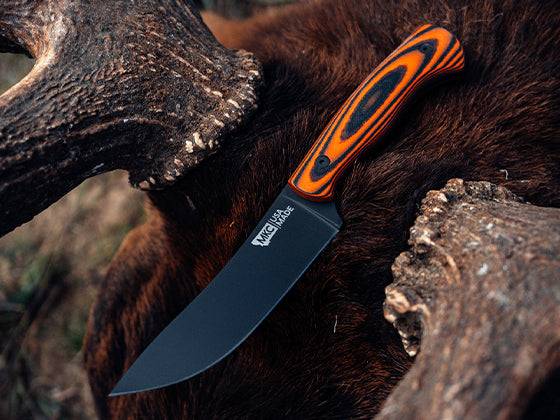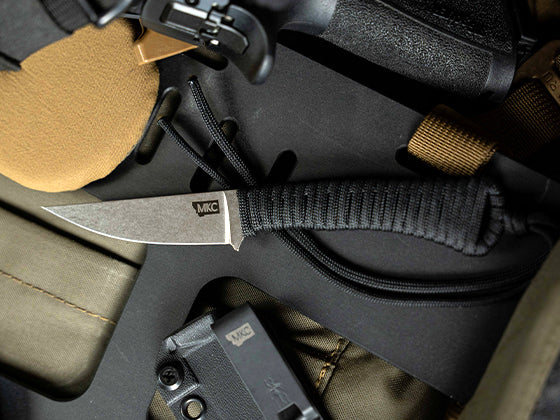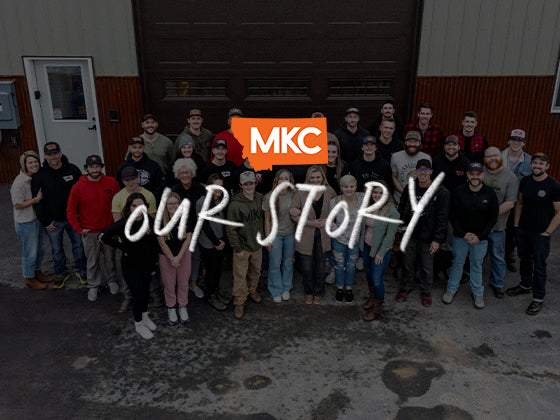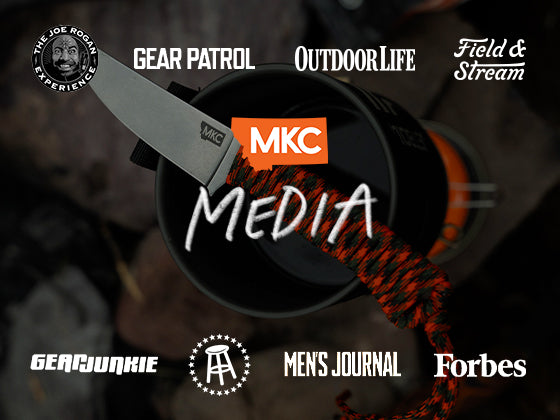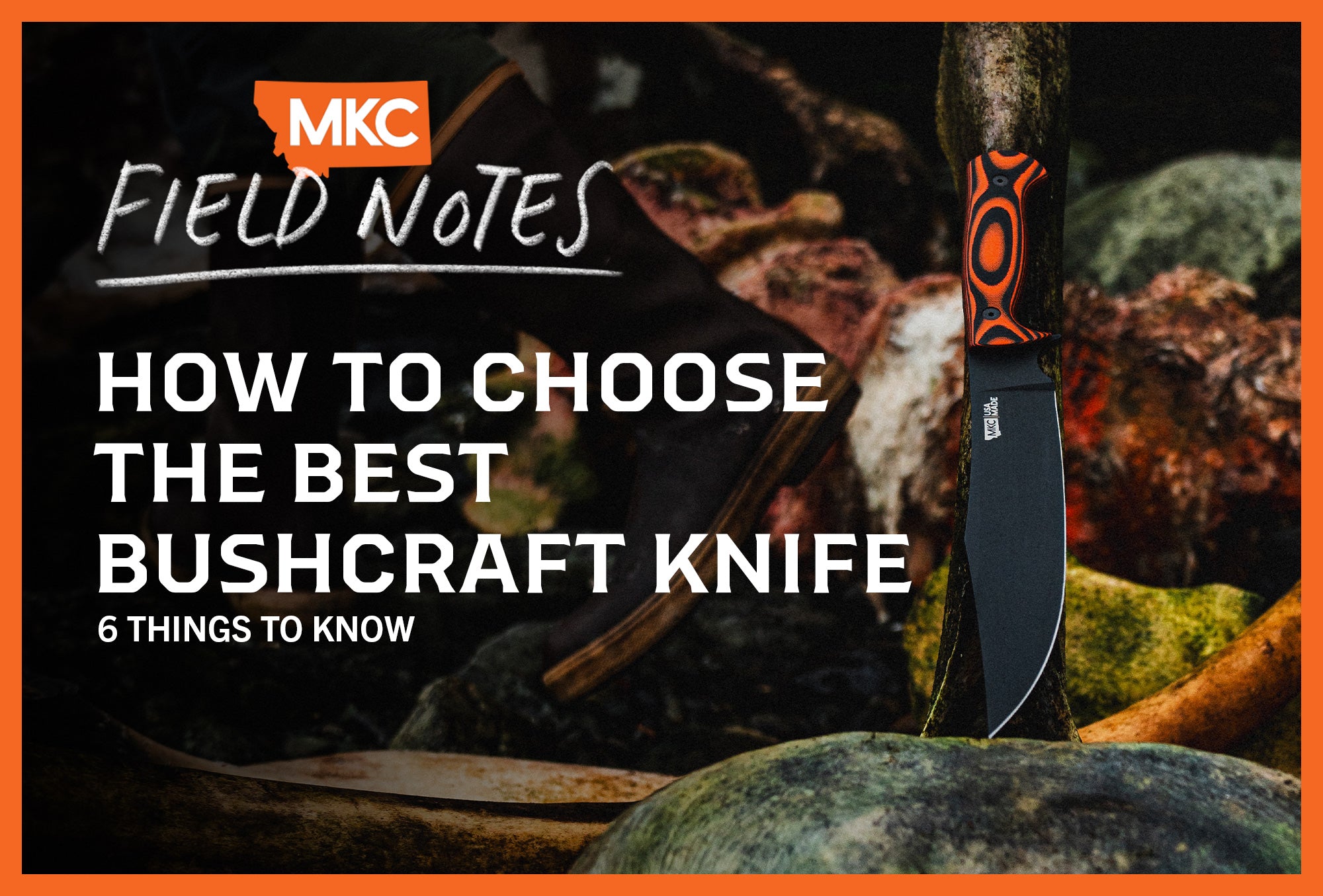Knife owners know their steels.
Every knife owner knows carbon steel rusts and stainless steel doesn’t, right?
Well... sometimes.
The truth is, there’s a lot of diversity among knife steels, even within the categories of carbon steel and stainless steel. On top of that, new developments in the industry are challenging preconceived notions we knife lovers have held for generations.
In this post, we’ll take an up-to-date look at carbon steel vs. stainless steel, explaining their differences to provide a better understanding of what makes the best knife steel for your needs.

What Is Carbon Steel?
Carbon steel is really just iron with carbon and other elements added to it. To qualify as carbon steel, the steel’s composition has to meet a few criteria:
- Minimum copper content can’t exceed 0.4%.
- Maximum copper content can’t exceed 0.6%.
- Maximum silicon content can’t exceed 0.6%.
- Maximum manganese content can’t exceed 1.65%.
Other elements, like chromium, cobalt, and nickel, have no parameters.
As the name suggests, carbon steel has a higher content of carbon. Carbon is what makes steel harden. The higher carbon content differentiates carbon steel from a mild steel, like 1045, which doesn’t have enough carbon to harden and retain an edge for knives.
One of my favorite carbon steels for knife making is 52100, which is ball bearing steel. Other carbon steels worth mentioning include 80CrV2, W2, W1, 1095, 1084. After these you start getting into lower-carbon spring steels, like 5160, which are used to make springs like you’d find in your car’s suspension.
High-, Medium-, and Low-Carbon Steel
Not all carbon steel contains the same amount of carbon. Carbon steel is a generic term that encompasses three types of steel:
- Low-carbon steel — less than 0.25% carbon
- Medium-carbon steel — 0.25% to 0.6% carbon
- High-carbon steel — 0.6% to 2.0%
Why does this matter? Because you want to choose the steel that’s appropriate for the tool and the job. If you’re a builder who needs a hammer that can bang on steel I-beams all day, the last thing you want is steel that will crack, chip, or shatter. You don’t want high-carbon steel.
Similarly, if you’re forging you want the face of your anvil to be hard, but not so hard that it’s brittle. This is where low- and medium-carbon steels come in.
Household appliances, however, often use high-carbon steel. They don’t have to worry about getting beat up as much as hammers or other work tools, but they do need a high level of hardness.
Benefits of Carbon Steel
Carbon steels are wear-resistant, shock-resistant, and highly durable. They’re particularly great for hunting knives, working knives, and knives on tough jobs for the following reasons:
Toughness. Carbon steel has the high level of toughness you need in working tools. Even lower-carbon steels are tough, like the steel used for car springs. Technically, the carbon alone isn’t what makes these steels tough; it’s what makes them harden. The heat treatment and the mix of the other elements involved are what make the steel tough.
Cost. Carbon steel is much less expensive than stainless steel, which is a huge advantage for knife makers and knife buyers alike.
Easy to forge. Carbon steel is very easy to forge. Custom knife makers love carbon steel because it moves much easier than stainless steel during the forging process. Anyone new to knife making who has a backyard forge and an anvil can heat it up and heat treat it with relative ease. It’s also easy to use for making Damascus steel.
Easy to sharpen. Carbon steel usually allows you to maintain an edge and sharpen at home more easily than stainless steel.
Drawbacks of Carbon Steel
Corrosion. The number one drawback with carbon steel is what’s already on everyone’s radar: the potential for rust and corrosion.
Caution with heat treatment. When improperly heat treated, higher-carbon steels become too hard and brittle. You have to heat treat carbon steel with the end use in mind. If you’re forging a knife, for example, then you want the steel to flex and bend. You’ll have to temper that steel down more, to a level that still makes it tough but not brittle.
Aesthetic. Carbon steel can’t take on a shiny, reflective polish. Some owners love a gorgeous mirror finish on their blades, and stainless steel is better for that.
What Is Stainless Steel?
The big differentiator in stainless steel is chromium. In order to be considered stainless, steel must have a minimum chromium level of at least 10.5%. Again, the makeup includes many other elements, but chromium is the ingredient with set parameters.
One new and fantastic stainless steel we use for MKC knives is CPM MagnaCut, which has high toughness, wear resistance, and corrosion resistance. Other popular stainless steels include CPM S30V, CPM S90V, M390, 440C, and AEB-L, which we use for our chef’s knives.
Benefits of Stainless Steel
Corrosion resistance. The biggest advantage of stainless steel is its resistance to rust and corrosion.
Heat resistance. Stainless steel also has excellent resistance to high temperatures. When I make my salt bath pots, for example, I heat salt to a very high, very corrosive temperature. That salt eats up carbon or mild steel right away, but not stainless.
You’ll see stainless steel used in almost all cases in industry that involve high heat. In kitchen pots and pans, for example, stainless steel provides a clean cooking environment because it doesn’t experience decarburization — and the components of your pan and don’t end up in your dinner.
Low maintenance. Stainless steel is low maintenance since you don’t have to worry as much about rust. It tends to last longer for the same reason. It’s great for water pipes and other applications where corrosion resistance is important.
Aesthetic. Stainless steel is perfect for beautiful finishes. You can achieve a highly polished mirror finish, or other interesting finishes like a nice brushed pattern or wire wheel pattern. These hold well over time since the steel won’t rust, whereas carbon steel finishes don’t tend to last as long.
Drawbacks to Stainless Steel
Cost. Stainless steel is very expensive, especially when you need a lot of it at an industrial level of production.
Difficult to forge. Stainless steel is much more difficult to forge vs. carbon steel. From a knife maker perspective, if you forge it incorrectly, you can ruin the steel fairly easily. It’s difficult to forge weld to itself; you really need to have the right alloys and know what you’re doing. You might have to use nickel sheeting between layers to help them fuse.
Lower toughness. Stainless steel tends to get really hard, which makes it wear-resistant, but which also makes it less tough. There are exceptions to this rule, but it applies in general.
Difficult to sharpen. Stainless steel can be a challenge to sharpen.
Carbon Steel vs. Stainless Steel: How to Choose the Best Knife Steel for Your Needs
If you’re a knife maker, it’s helpful to determine whether you have the right equipment, knowledge, and facilities to properly heat treat stainless steel.
If you’re a knife buyer, determine how concerned you are with having a steel that does or doesn’t rust and how much time you’re willing to put into caring for your blade. Also, know that knife makers can take certain steps to increase the corrosion resistance of carbon steel.
At MKC, we counteract rusting in our carbon steel knives by Parkerizing the blades. This pre-oxidizes the blade’s surface and makes it much less susceptible to corrosion.
If a knife maker isn’t taking any countermeasures, then you as the end user have to be okay with your blade rusting.
Ultimately, you have to determine what kind of a knife you’re buying and what you’ll be using it for. The low end of the high-carbon range, say a spring steel, is a great steal for a camp knife that you might use for a lot of prying or similar work. For a chef’s knife you’ll be using in the kitchen around water and other corrosive materials, you want a rust-resistant, super hard blade that can cut very fine.
So whether you’re forging or buying, take a little time to compare the benefits and drawbacks of carbon steel vs. stainless steel and apply them to your particular needs. You’ll be able to determine the right material for the job!
by Josh Smith, Master Bladesmith and Founder of Montana Knife Company
























